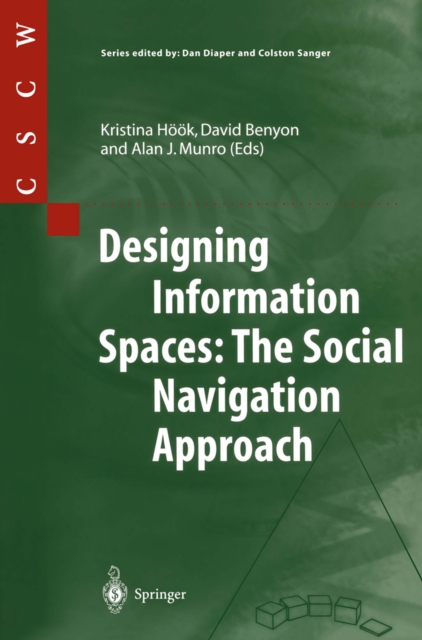
Designing Information Spaces: The Social Navigation Approach PDF
Edited by Kristina Hook, David Benyon, Alan J. Munro
Part of the Computer Supported Cooperative Work series
- Information
Description
That's a look at an array of social proxies. The purpose was to make it clear that the concept of social proxy is quite general.
Social proxies can be designed to support a wide range of on-line interactions, whether they involve conversation or not.
They may be synchronous or asynchronous, and they may be associated with activities which are an end in them- selves (e. g. auctions), or activities which are simply a means to an end (e. g. waiting in queues). We believe that by providing a shared represen- tation of the activity in which participants are involved, social proxies can help create shared expectations, shared experiences, and can serve as a resource which participants can use to structure their individual and collective interactions.
That is, at least, our claim. However, it is important to note that, except for the first, the proxies described so far are concept pieces, meaning that they haven't been implemented and deployed to real situations.
Now, however, we will turn to an implemented system, and look at a real example. 1. 4 Experience: The Babble System In the previous section we introduced the concept of social proxies and discussed examples illustrating the wide range of situations to which social proxies can be applied.
In this section, we focus on our experience in designing, implementing and studying a social proxy in the context of an on-line system called Babble.
Information
-
Download Now
- Format:PDF
- Publisher:Springer London
- Publication Date:06/12/2012
- Category:
- ISBN:9781447100355
Information
-
Download Now
- Format:PDF
- Publisher:Springer London
- Publication Date:06/12/2012
- Category:
- ISBN:9781447100355



